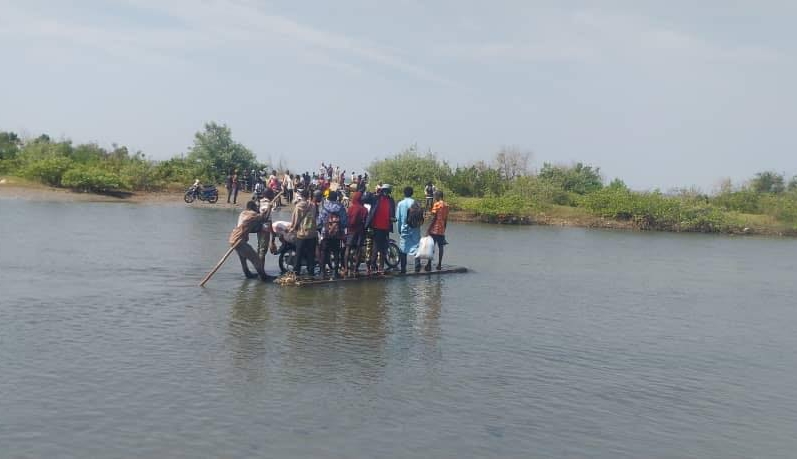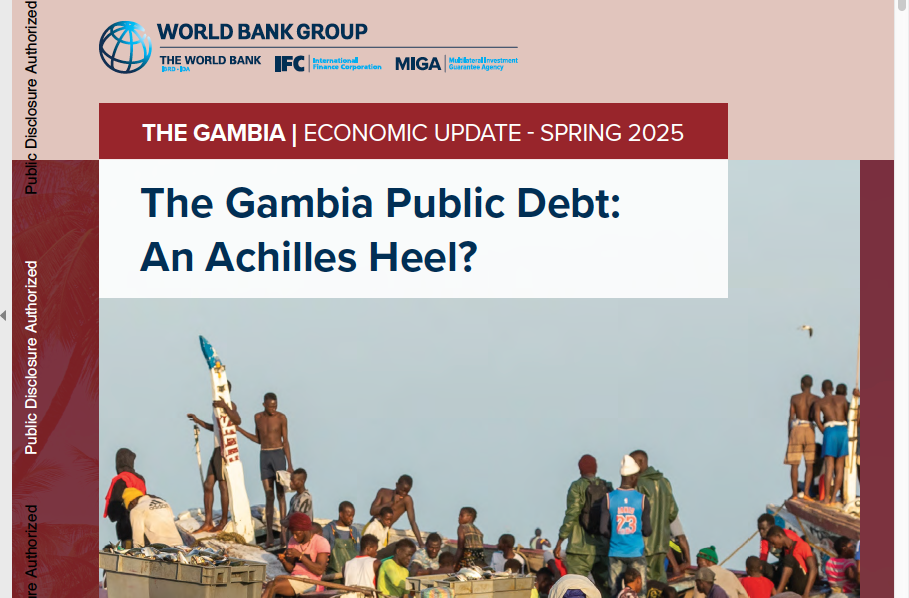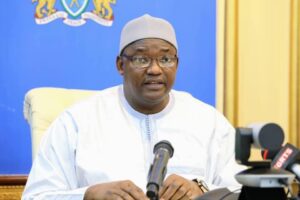Gambiaj.com – (BANJUL, The Gambia) – The Gambia’s economy is showing its strongest rebound in years, but a new World Bank report warns that without bold reforms, the country risks sliding back into a debt trap that could undo its hard-won gains.
The World Bank’s Gambia Economic Update (Spring 2025), titled “Public Debt: An Achilles Heel?”, highlights that the economy grew by 5.7 percent in 2024, outpacing both Sub-Saharan Africa and ECOWAS averages.
Agriculture, services, and a revived tourism sector drove this expansion, alongside strong remittance inflows and government spending tied to preparations for the Organization of Islamic Cooperation summit. Per capita growth rose to 3.4 percent, marking a rare period of convergence with regional peers.
Inflation also eased as tighter monetary policies took effect, stabilizing the dalasi and strengthening investor confidence. The fiscal deficit narrowed in 2024, reflecting better budget discipline and falling domestic borrowing costs.
But beneath these positives lies a sobering reality: debt dominates the national budget. The report warns that interest payments, especially on domestic borrowing, consume the largest share of locally financed expenditure—leaving little room for essential investments in health, education, and infrastructure.
Poverty indicators are improving only slowly, while jobs remain scarce and climate shocks continue to threaten livelihoods.
Debt: The Achilles Heel
The report draws attention to The Gambia’s rapid return to unsustainable debt levels less than two decades after receiving sweeping relief under the Heavily Indebted Poor Countries initiative in 2007.
Today, the debt stock is once again ballooning, owed largely to multilateral creditors such as the IMF, Islamic Development Bank, and BADEA, as well as bilateral partners including Saudi Arabia, Kuwait, and India. On the domestic side, commercial banks have become key financiers.
Debt service obligations are now so burdensome that the country is “borrowing to pay off past loans,” the report cautions.
Modeling shows that while moderate debt can stimulate growth, The Gambia has moved far beyond the optimal threshold, where debt now acts as a brake on economic performance. Investment is being crowded out, borrowing costs are rising, and exchange rate stability is under strain.
Reform or Regression: A Fragile Balance
The World Bank warns that the impending expiration of debt service deferrals could sharply erode fiscal space and undermine growth prospects. Unless reforms are adopted, the country could regress into crisis.
Among the proposed reforms are stronger domestic revenue mobilization through better tax collection and compliance, more efficient public spending that prioritizes essentials, and the development of local capital markets to reduce reliance on foreign loans.
The report also urges directing remittances and foreign direct investment toward productive ventures rather than short-term consumption. Crucially, it calls for embedding debt sustainability assessments into all future borrowing decisions.
The message of the update is stark: The Gambia is enjoying a fragile moment of recovery, but its progress is at risk of being undone by unsustainable debt. The metaphor chosen by the World Bank—public debt as the nation’s “Achilles heel”—captures the urgency.
“Without reforms, the progress of today risks becoming the disappointment of tomorrow,” the report concludes. “But with discipline, foresight, and stronger institutions, The Gambia can transform debt from an anchor into a foundation for inclusive growth.”










